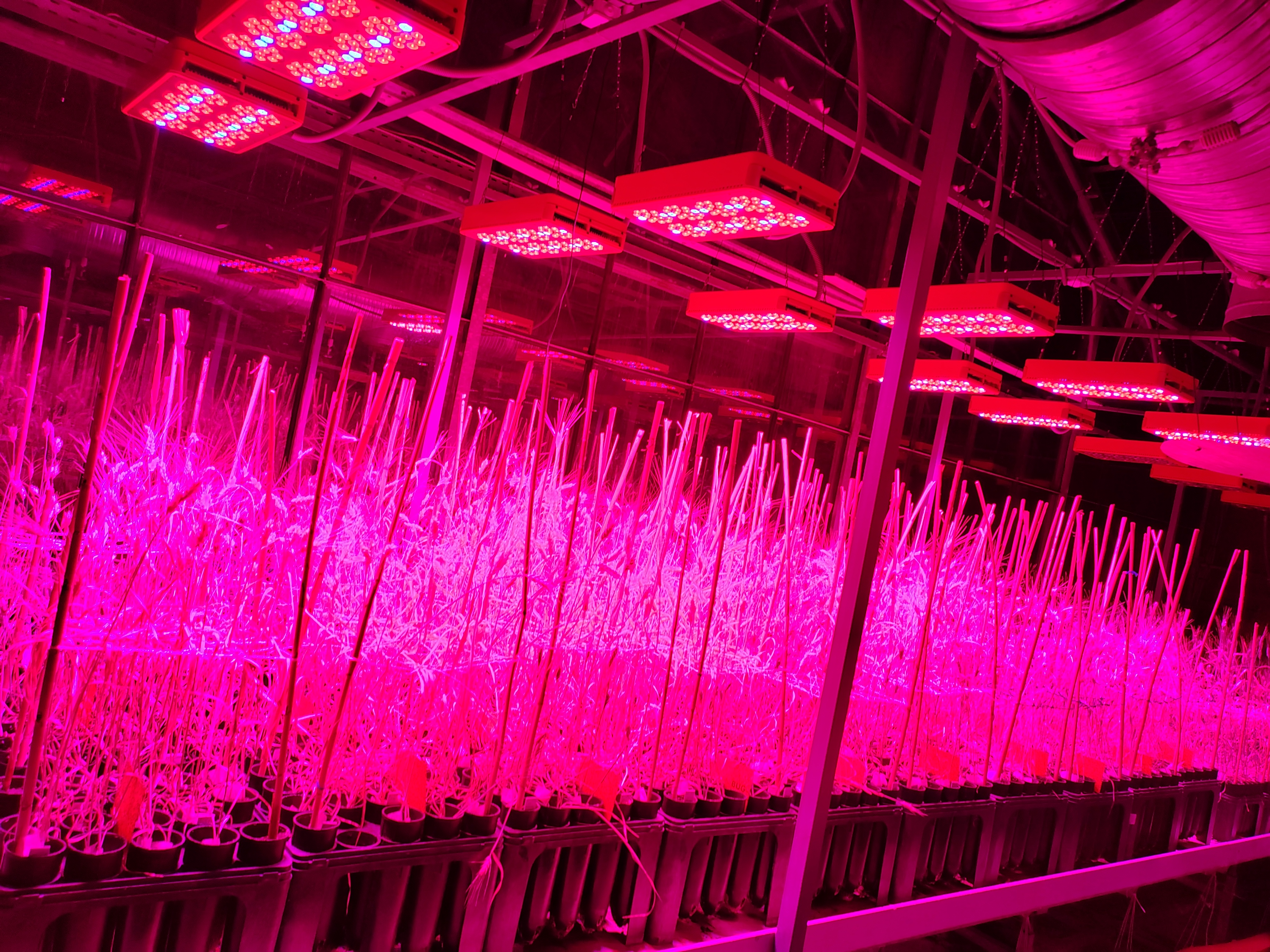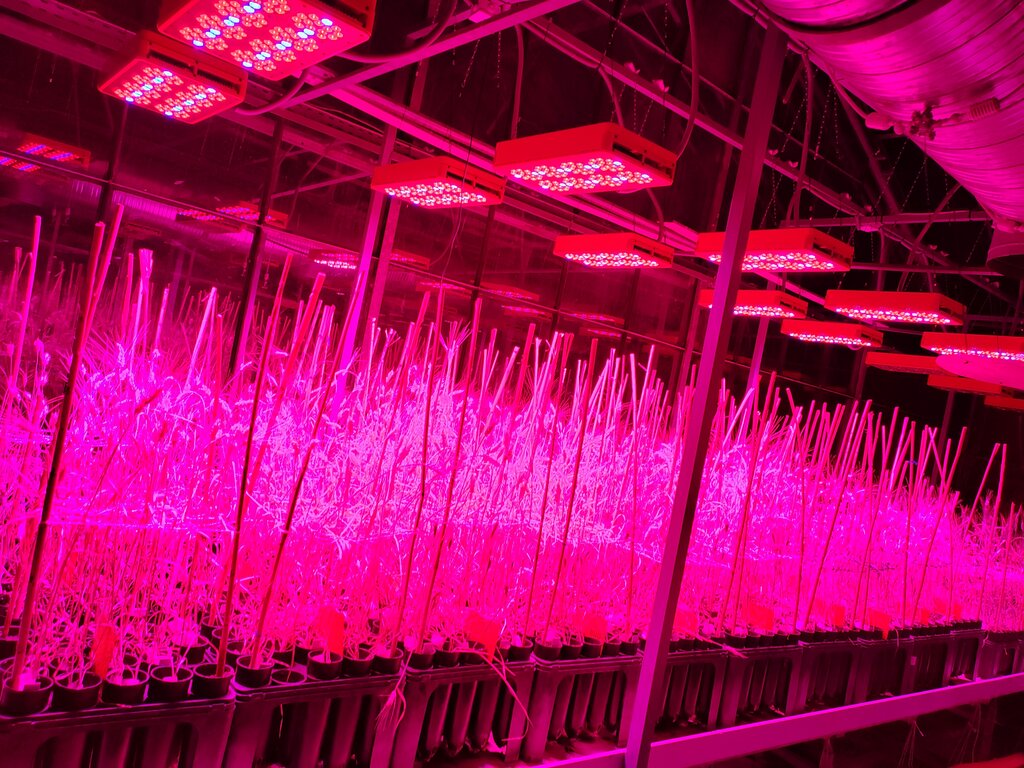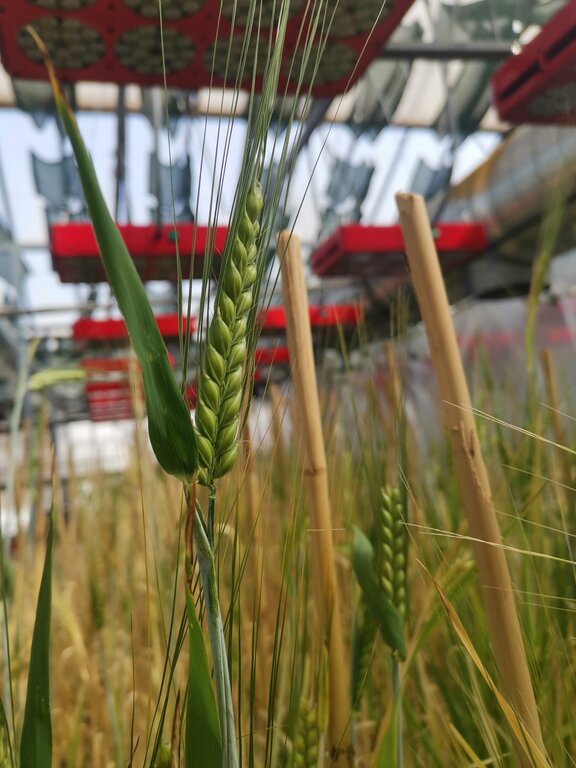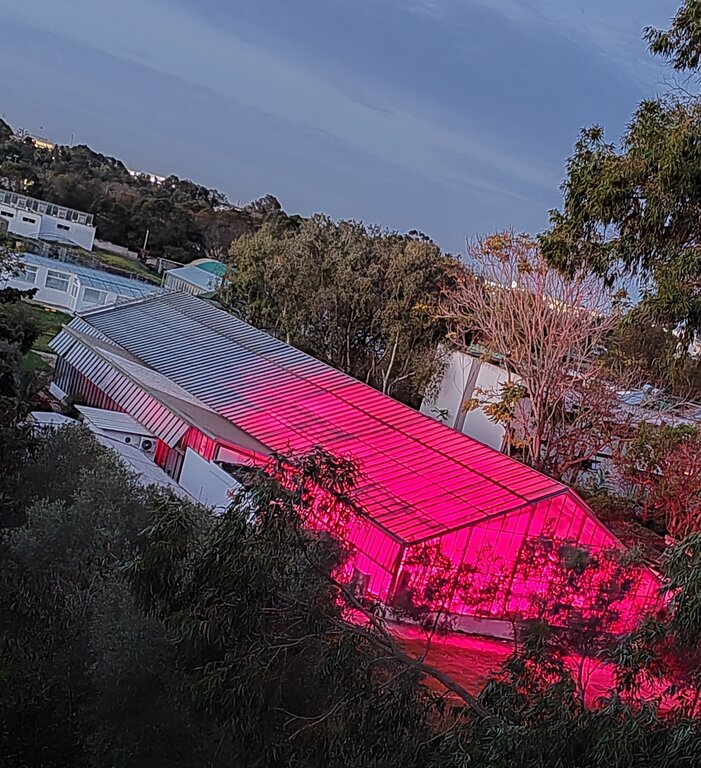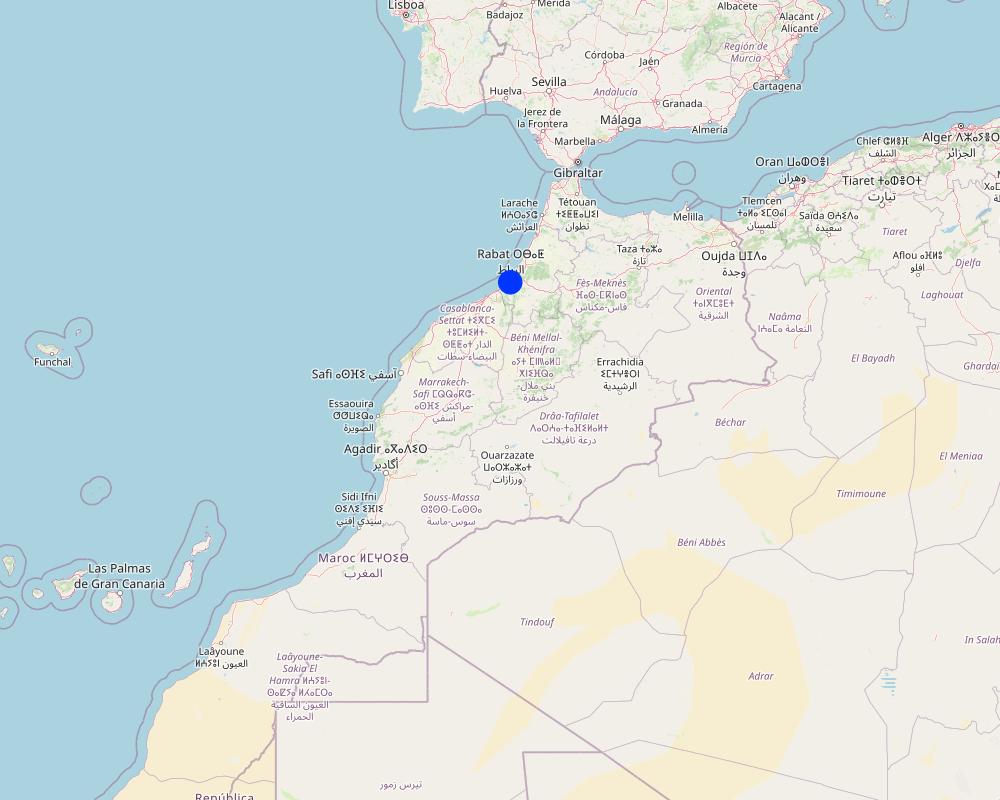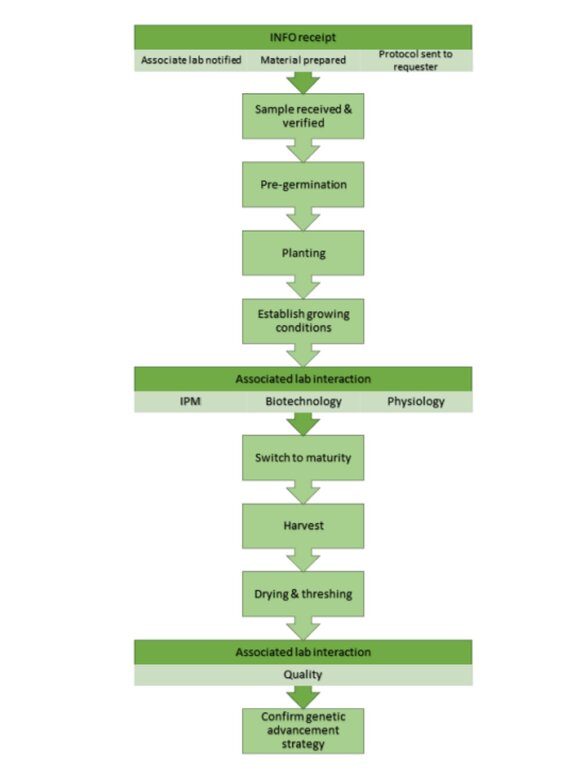Speed Breeding Platform [Марокко]
- Создание:
- Обновить:
- Составитель: Joren Verbist
- Редактор: –
- Рецензенты: William Critchley, Rima Mekdaschi Studer
approaches_6875 - Марокко
Просмотреть разделы
Развернуть все Свернуть все1. Общая информация
1.2 Контактные данные специалистов и организаций, участвующих в описании и оценке Подхода
Ответственный (-ые) специалист (-ы)
Developed the Standard Operating Procedures of ICARDA Speed Breeding Platform:
Zaim M
International Center of Agricultural Research in Dry Areas (ICARDA)
Марокко
Speed Breeding Platform co-developer:
Morsli H
International Center of Agriculture Research in the Dry Areas (ICARDA)
Марокко
Physiologist:
Visioni M
International Center of Agricultural Research in Dry Areas (ICARDA)
Марокко
Entomologist:
Boulamtat R
International Center of Agricultural Research in Dry Areas (ICARDA)
Марокко
Pathologist:
Kemal S.A.
Марокко
Barley Breeder and Speed Breeding Platform designer:
Sanchez-Garcia M
International Center of Agricultural Research in Dry Areas (ICARDA)
Марокко
Название проекта, содействовавшего документированию/оценке Подхода (если применимо)
ICARDA Institutional Knowledge Management InitiativeНазвание организации (-ий), содействовавших документированию/оценке Подхода (если применимо)
International Center for Agricultural Research in the Dry Areas (ICARDA) - Ливан1.3 Условия, регламентирующие использование собранных ВОКАТ данных
Когда были собраны данные (на местах)?
2022
Составитель и ответственный/-ые специалист(-ы) согласны с условиями, регламентирующими использование собранных ВОКАТ данных:
Да
2. Описание Подхода УЗП
2.1 Краткое описание Подхода
Improving crop varieties is crucial for food security and climate resilience, but traditional methods are slow and expensive. The Speed Breeding Platform shortens breeding time substantially, enhances quality, and relies on strong partnerships between NARES and CGIAR centers.
2.2 Подробное описание Подхода
Подробное описание Подхода:
Climate change presents significant challenges for agriculture and crop production. One possible solution to enhance climate resilience is the development and adoption of improved, better adapted crop varieties. These varieties are specifically engineered to withstand specific threats, offering farmers a more reliable means of ensuring successful harvests despite the challenges posed by a changing climate. Improved varieties are thus crucial for achieving food security.
However, a major limitation of this solution is that researching and producing new crop varieties is a complex process that demands considerable time and resources. It involves cross design, segregating generation advancement and rigorous field testing to identify traits. The development of new varieties often spans several years, if not decades, before they are ready for widespread adoption by farmers. Sustained investment and collaboration across scientific organizations are thus crucial.
To accelerate the development of improved crop varieties, the International Center of Agricultural Research in Dry Areas (ICARDA), together with partners is implementing Speed Breeding as its main generation advancement method. Through the support of the Arab Fund for Economic and Social development (AFESD), the Templeton World Charity Foundation, Inc and the Crop Trust, protocols to accelerate the generation advancement of the main crops (wheat, barley, faba bean, lentil, grasspea and chickpea) have been developed and are available to NARES. ICARDA has also established the Speed Breeding Platform in Rabat, Morocco. Covering approximately 500 square meters, this facility comprises four buildings, including two greenhouses of 175 m2 and 185 m2 respectively, each housing five independently controlled growth chamber.i
The Speed Breeding method utilises LED lighting - originally invented by NASA to sustain astronauts during prolonged space missions to compensate for the absence of sunlight in space. By providing plants with approximately 22 hours of light per day, this accelerates their growth significantly. Cultivating crops in a controlled environment shields them from the unpredictable impacts of adverse weather conditions. The major advantage is thus its ability to accelerate the breeding process for improved crop varieties. For instance, while traditional methods may take between 6 and 12 years to breed a new grass pea (Lathyrus sativus) variety, utilizing the Speed Breeding Platform reduces this timeframe to approximately 5 years. The Speed Breeding Platform thus enhances efficiency and responsiveness in addressing agricultural challenges.
The Speed Breeding Platform has a capacity for advancing over 50,000 cereal and legume plants. This is done in close collaborations with fellow scientists from other CGIAR centers and National Agricultural Research and Extensions Services (NARES) centers. NARES centers play an indispensable role in determining the traits and varieties to prioritize for advancement, using their direct engagement with farmers in field settings to assess their specific needs and challenges. The main advantages are:
- Varieties reach farmers faster by reducing the time from crossing to field testing;
- Testing during advancement increases the resilience of new varieties to pests and diseases i.e., higher quality of improved varieties;
- It can help coordinating breeding action between CGIAR and NARES by co-designing crosses and centralizing advancement i.e., higher resource efficiency.
The main disadvantage is the high costs associated with building and operating the facilities of the Platform. In addition, it requires expertise to operate. However, NARES personnel are currently being trained and educated in breeding and using the Speed Breeding Platform.
In conclusion, while improved crop varieties hold immense potential for climate resilience in agriculture and ensuring food security, their development remains a complex, time-consuming and resource-intensive process. The approach of the Speed Breeding Platform represents a promising step forward, by faster and more efficient crop breeding, facilitating a prompter solution.
Acknowledgement: the pilot facilities used to set up the ICARDA Speed Breeding Platform were funded by a project from the Third Call for Proposals under the Benefit-sharing Fund of the International Plant Treat for Plant Genetic Resources for Food and Agriculture entitled “Addressing the challenges of climate change for sustainable food security in Turkey, Iran and Morocco, through the creation and dissemination of an international database to promote the use of wheat genetic resources and increase genetic gains.” CFP 2014/2015-W3B-PR-18-Turkey. The final facilities were funded by a project from the Arab Fund for Economic and Social Development (AFESD) entitled “Modernization of ICARDA Breeding Programs".
2.3 Фотографии, иллюстрирующие Подход
2.5 Страна/ регион/ место, где применялся Подход
Страна:
Марокко
Более точная привязка места:
Rabat
Map
×2.6 Даты начала и окончания реализации Подхода
Год начала реализации:
2021
2.7 Тип Подхода
- в рамках проекта/ программы
2.8 Каковы цели/ задачи Подхода
The objective of the new Speed Breeding Platform is to provide the tools to CGIAR and NARES breeding programs to develop better varieties faster and shorten the time needed to reach farmer’s fields. The access to this technology also helps responding to new threats hindering productivity in a faster and more effective way.
2.9 Условия содействующие применению Технологии/ Технологий в рамках Подхода или затрудняющие его
Наличие/ доступность финансовых ресурсов и услуг
- затрудняют
Developing this type of facilities require an important initial investment and more importantly a considerable running cost.
Институциональные условия
- содействуют
The leading institution, in this case ICARDA, realized the potential for impact of this technology for the region and initiated the fund raising to make it happen.
Сотрудничество/ координация действий
- содействуют
The use of this technology will involve the coordination between ICARDA Speed Breeding Platform personnel, ICARDA breeders and NARES breeders to decide the best approach to have a collaborative use of the facilities.
Осведомленность в области УЗП, доступность технической поддержки
- затрудняют
This technology requires not only the adequate facilities but also the know-how. ICARDA has developed a Standard Operations Procedure that summarizes the know-how and it is freely available as international public good.
Объем работ, доступность рабочей силы
- затрудняют
The use of the technology requires well trained manpower to effectively achieve a high number of generations per year.
3. Участие и распределение ролей заинтересованных сторон
3.1 Заинтересованные стороны, участвующие в реализации Подхода и их роли
- ученые-исследователи
CGIAR, ICARDA, and NARES breeders
They decide the plant populations to be advanced and the type of testing involved.
- международные организации
AFESD and FAO
The Benefit Sharing fund of the ITPGR (FAO) funded the growth chamber that was later used as pilot chamber to adapt and test the technology. Then, AFESD through the Breeding Modernization of ICARDA Breeding Programs provided the funds to build the new facilities.
Если участвовало несколько заинтересованных сторон, назовите ведущую организацию:
ICARDA
3.2 Участие местных землепользователей/ местных сообществ на разных стадиях реализации Подхода
| Участие местных землепользователей/ местных сообществ | Перечислите участников и опишите их вовлеченность | |
|---|---|---|
| инициирование/ мотивация | пассивное | |
| планирование | пассивное | |
| выполнение | пассивное | |
| мониторинг/ оценка | пассивное |
3.3 Схема реализации (если имеется)
Описание:
1: Receive information from requester (including material description, advancing strategy, traits, germplasm)
2: Receive and check samples: ICARDA Speed Breeding Platform staff inspect the samples prior to placing them in ICARDA Speed Breeding Platform Store 1 to identify and
address potential pests and other problems. Then, the samples are kept at -20°C for 24h to eliminate potential insect pests in the seeds.
3: Pre-germination: seeds are placed on the trays with systematic labeling. The results of pre-germination process are reported to the requester.
4: Growing conditions: The establishment of the growing conditions will depend on the crop and type of selection strategy applied.
5: Planting and transfer to growth room: Once the scientist confirms the planting list, the staff start planting on cones following the agreed protocol.
6: Trait collection: the facility manager will notify one week in advance the concerned labs when the plants are reaching the key growing stage set in the Project Protocol for trait recording or leaf sampling. Before maturity, the relevant disciplines are IPM, physiology and biotechnology. For traceability and data safety, data are recorded via Fieldbook Android Application, to be imported to BMS via BrApi.
7: Switch to maturity mode : After flowering the plants will enter the accelerated maturity process as per the protocols. Thus, the irrigation is stopped to force plant maturity. The requester will be notified of the entries with missing spikes or pods. At this stage, the FM will inform the quality lab to prepare for the reception of samples if established in the Project Protocol.
8. Harvest: The ICARDA Speed Breeding Platform staff harvest the plants following the requester selection (if any). The harvested spikes/pods are put in labeled bags showing: Crop, trial name, harvesting date, entry code and the barcode.
9. Drying and threshing: The harvested plants are placed in ovens for 2 days at 45°C, then threshed. If the Project Protocol includes it, the seeds are sent to the quality lab for end-use quality analysis. Otherwise, the seeds are kept in Store 1 for short term storage. The facility manager communicates the seed number of each entry to the requester, together with all recorded data.
10. Generation advancement strategy: Based on the data collected during the experiment, the requester confirms the next step of the genetic advancement strategy. In case a selection is made, the requester provides the required information by adding the information to the request form and send it to the RS to generate a new Project Protocol.
Автор:
ICARDA Cereals and Legumes Speed Breeding Platform ( https://hdl.handle.net/20.500.11766/67537 )
3.4 Принятие решений по выбору Технологии/ Технологий УЗП
Укажите, кто принимал решение по выбору применяемой Технологии/ Технологий:
- исключительно специалисты по УЗП
Поясните на чём было основано принятие решений:
- результаты исследований
4. Техническая поддержка, повышение компетенций и управление знаниями
4.1 Повышение компетенций/ обучение
Проводилось ли обучение землепользователей/ других заинтересованных лиц?
Да
- Researchers and breeders
Тип обучения:
- в ходе работы
- курсы
Рассматриваемые темы:
Breeding
4.2 Консультационные услуги
Есть ли у землепользователей возможность получать консультации?
Да
Укажите, где именно оказываются консультационные услуги:
- на полях землепользователей
- в постоянно функционирующих центрах
4.3 Институциональная (организационная) поддержка
В ходе реализации Подхода были ли организованы новые институциональные структуры или поддержаны уже существующие?
- да, немного
Укажите уровень, на котором структуры были укреплены или вновь созданы:
- национальный
Укажите тип поддержки:
- повышение компетенций/ обучение
Подробнее:
National scientists are trained in breeding and using the Speed Breeding Platform
4.4 Мониторинг и оценка
Являются ли мониторинг и оценка частью Подхода?
Нет
4.5 Научные исследования
Были ли научные исследования частью Подхода?
Да
- Genetics / Breeding
Напишите подробнее и назовите тех, кто выполнял исследования:
Research in breeding is done by ICARDA, CGIAR centers and NARES centers
5. Финансирование и внешняя материальная поддержка
5.1 Годовой бюджет мероприятий по УЗП в рамках Подхода
Если точный годовой бюжет неизвестен, укажите примерный диапазон затрат:
- 100 000-1 000 000
Комментарий (например, основные источники финансирования/ ключевые доноры):
The main donors were the Benefit Sharing Fund of the ITPGR (FAO) that provided the funding that resulted in the first Speed Breeding pilot facility with capacity for 3,000 plants and the Arab Fund for Economic and Social Development (AFESD) who provided the funds for the expansion of this initial pilot facility and develop the ICARDA Speed Breeding Platform, a fully automatic facility that allows advancing more than 50,000 cereal and legume plants
5.2 Финансирование и внешняя материальная поддержка, предоставляемая землепользователям
Предоставлялась ли землепользователям финансовая/ материальная поддержка для применения Технологии /Технологий?
Нет
5.3 Субсидии на отдельные затраты (включая оплату труда)
- нет
5.4 Кредитование
Предоставлялись ли в рамках Подхода кредиты на мероприятия УЗП?
Нет
5.5 Другие методы или инструменты стимулирования
Использовались ли другие методы или инструменты стимулирования для продвижения Технологий УЗП?
Нет
6. Анализ влияния и заключительные положения
6.1 Влияние Подхода
Сумел ли Подход помочь землепользователям внедрить и поддерживать технологии УЗП?
- Нет
- Да, немного
- Да, умеренно
- Да, существенно
Through the Speed Breeding Platform, improved varieties are publicly released to farmers and seed cooperation. This allows them to use their land more sustainable.
Сумел ли Подход улучшить согласованность действий и повысить рентабельность применения практик УЗП:
- Нет
- Да, немного
- Да, умеренно
- Да, существенно
Building on strong collaboration between international partners and national partners, breeding became more centralized making it more cost-effective. The reduced breeding time also contributes to higher resource efficiency.
Сумел ли Подход расширить знания и возможности других заинтересованных сторон?
- Нет
- Да, немного
- Да, умеренно
- Да, существенно
Staff of NARES centers are trained in breeding.
Сумел ли Подход укрепить сотрудничество между заинтересоваными сторонами/ выстроить механизмы сотрудничества?
- Нет
- Да, немного
- Да, умеренно
- Да, существенно
Staff of NARES centers are trained in breeding.
Сумел ли Подход способствовать улучшению продовольственой безопасности/ качества питания?
- Нет
- Да, немного
- Да, умеренно
- Да, существенно
Improved varieties are more climate resilient contributing to food security.
Сумел ли Подход улучшить способность землепользователей адаптироваться к изменениям климата и смягчать последствия катастрофических погодных явлений?
- Нет
- Да, немного
- Да, умеренно
- Да, существенно
Improved varieties are better adapted to the changing climate.
6.2 Основные причины, побуждающие землепользователей внедрять УЗП
- рост продуктивности
- рост прибыли (доходности) и рентабельности
- снижение риска катастрофических погодных явлений
6.3 Долгосрочная устойчивость мероприятий в рамках Подхода
Могут ли землепользователи самостоятельно (без внешней поддержки) продолжать применение того, что было реализовано в рамках Подхода?
- нет уверенности
6.4 Сильные стороны/ преимущества Подхода
| Сильные стороны/ преимущества/ возможности по мнению землепользователей |
|---|
| Varieties reach farmers faster by reducing the time from crossing to field testing |
| Allows testing during advancement increasing the resilience of new varieties to pests and diseases |
| Can help coordinating breeding action between CGIAR and NARES by co-designing crosses and centralizing advancement |
6.5 Слабые стороны/ недостатки Подхода и пути их преодоления
| Слабые стороны/ недостатки/ риски по мнению землепользователей | Возможные пути их преодоления/снижения? |
|---|---|
| Relatively high initial investment to develop the facilities | ICARDA platform is open to NARES and other collaborators hence costs can be shared. |
| Expertise is needed to achieve results | Code of conducts and protocols of the facilities has been published and trainings of NARES staff are being done. |
7. Справочные материалы и ссылки
7.1 Методы сбора/источники информации
- опросы специалистов/экспертов по УЗП
- данные, собранные из отчетов и достоверных документов
7.3 Ссылки на материалы, доступные онлайн
Название/ описание:
ICARDA Cereals and Legumes Speed Breeding Platform.
Адрес в сети Интернет:
https://mel.cgiar.org/reporting/downloadmelspace/hash/186eb1d94780ca956e9b86227305761a/v/7ec567b72097f21057ea41b0124cf1a7
Название/ описание:
Laura Becker, Enrico Bonaiuti, Miguel Sanchez-Garcia, Zakaria Kehel, Andrea Visioni, Ajit Govind. (1/12/2020). Monitoring, Evaluation, and Learning Plan for Modernization of Crop Breeding Programs in Arab Countries.
Адрес в сети Интернет:
https://hdl.handle.net/20.500.11766/12212
Название/ описание:
Miguel Sanchez-Garcia, Zewdie Bishaw, Abdoul Aziz Niane. (31/12/2021). 2022 ICARDA global barley breeding program International Nurseries. Beirut, Lebanon: International Center for Agricultural Research in the Dry Areas (ICARDA).
Адрес в сети Интернет:
https://hdl.handle.net/20.500.11766/66860
Название/ описание:
Samira El-Hanafi, Souad Cherkaoui, Zakaria Kehel, Miguel Sanchez-Garcia, Jean-Benoit Sarazin, P. Stephen Baenziger, Wuletaw Tadesse. (14/2/2022). Hybrid Seed Set in Relation with Male Floral Traits, Estimation of Heterosis and Combining Abilities for Yield and Its Components in Wheat (Triticum aestivum L. ). Plants, 11 (4).
Адрес в сети Интернет:
https://hdl.handle.net/20.500.11766/67050
Ссылки и модули
Развернуть все Свернуть всеСсылки
Нет ссылок
Модули
Нет модулей


